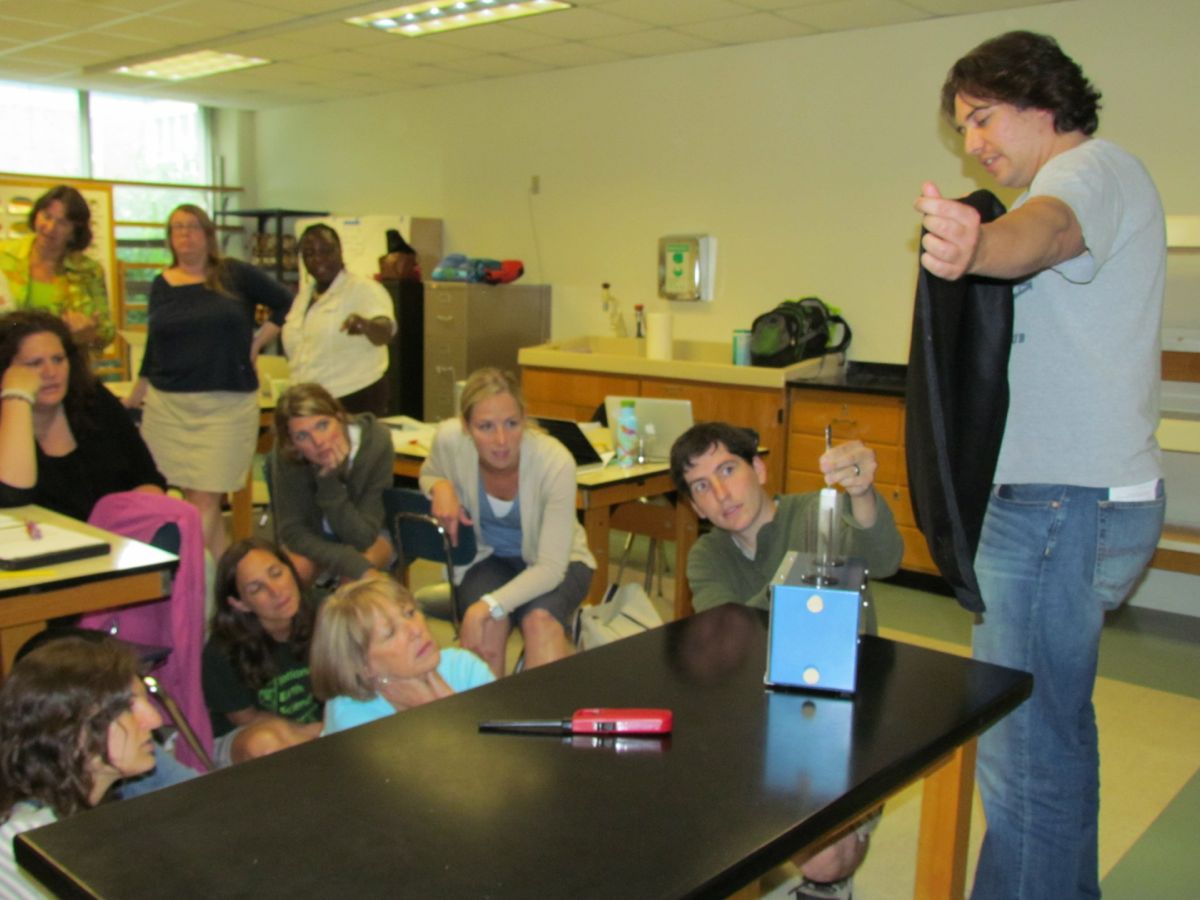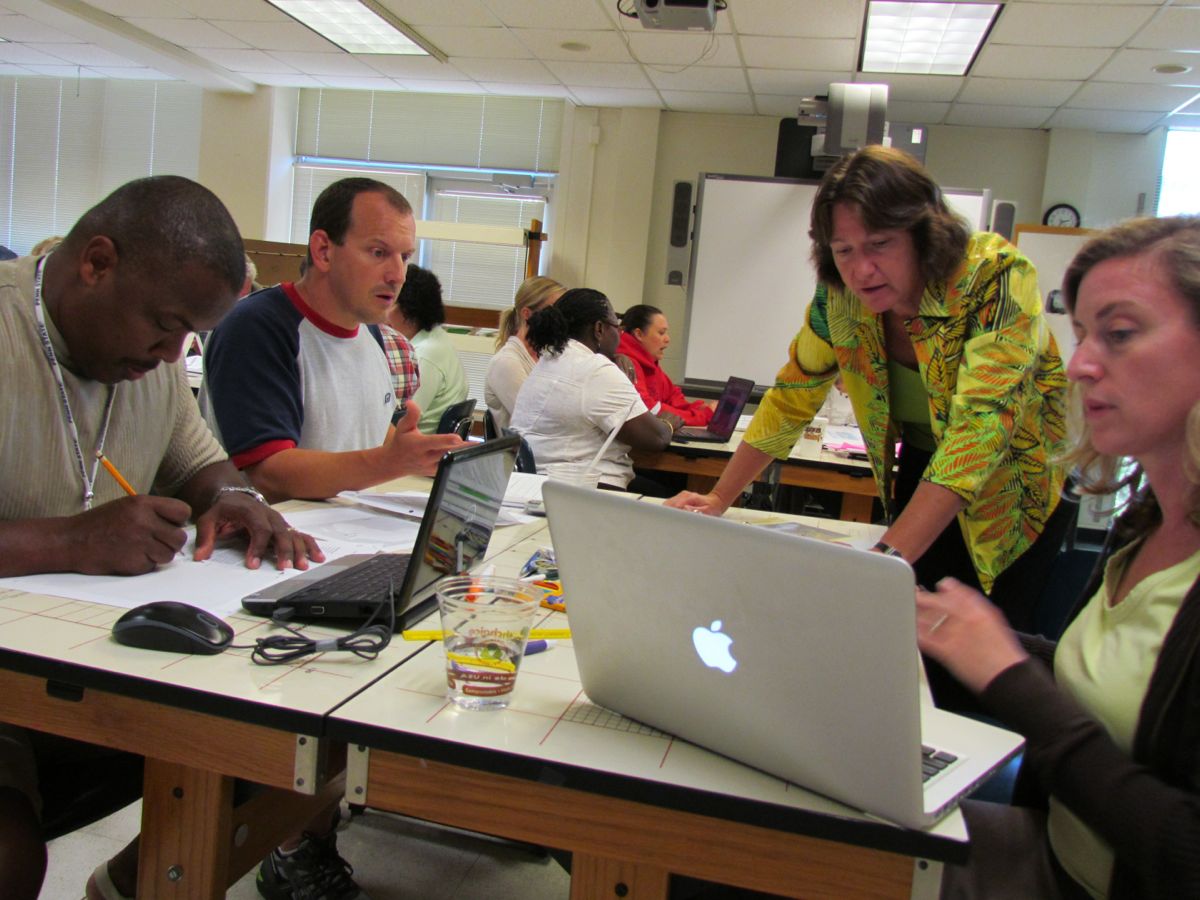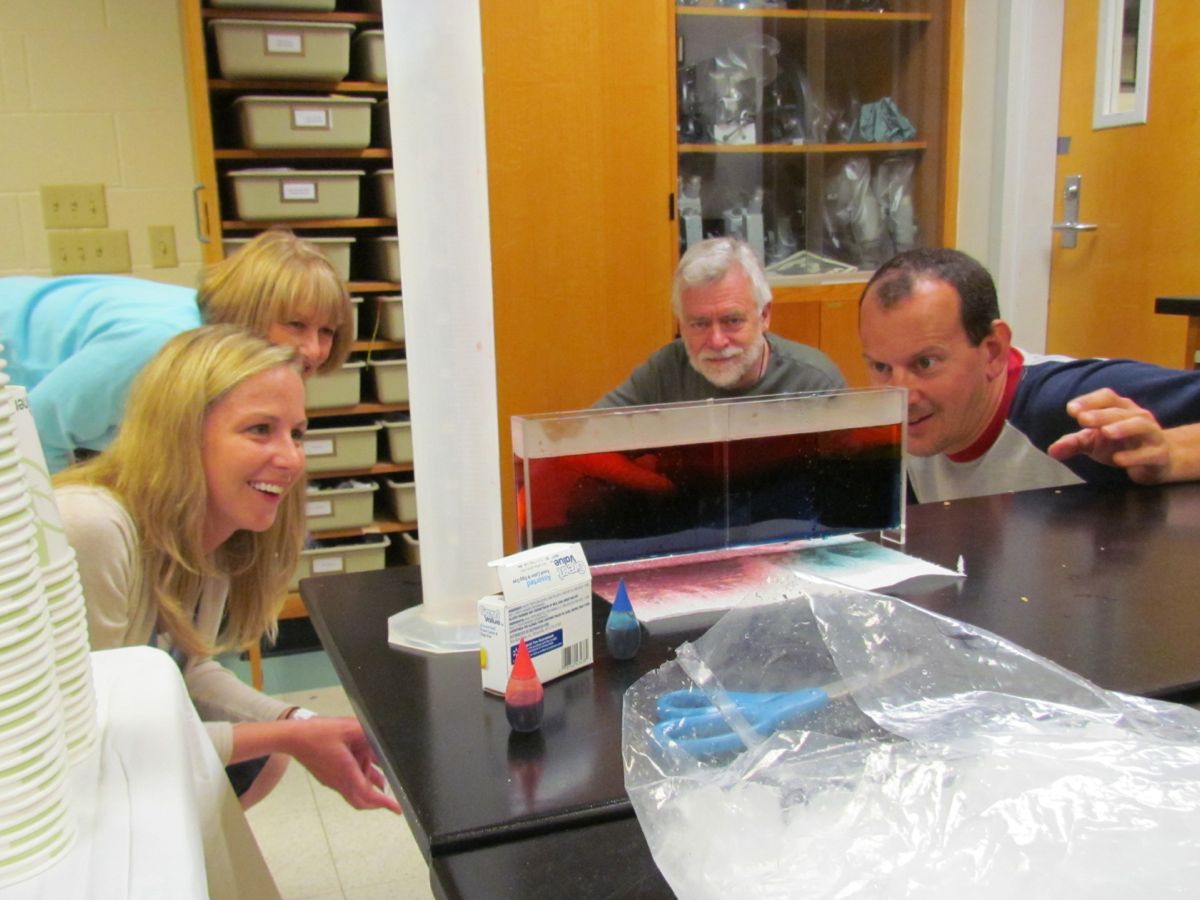How do you explain to a middle school student the process of generating electricity from coal in a way that allows them to really understand the process and apply it to other energy systems?



Photos of teachers in last year’s climate workshop from www.paesta.psu.edu.
A relatively new partnership at Penn State, Earth & Space Science Partnership (ESSP), is working on answering similar questions related to a variety of earth science topics and providing professional development opportunities for teachers from underserved school districts throughout Pennsylvania. The partnership, which is funded by a grant from the National Science Foundation, is exploring ways to engage students to deepen their understanding of science curriculum. Faculty and graduate students from the College of Education are partnering with members of the College of Earth and Mineral Sciences and the Eberly College of Science to develop workshops on energy, plate tectonics, and astronomy for summer 2012.
Two researchers from the EMS Energy Institute are part of the energy workshop team. Dr. Meredith Hill Bembenic, a postdoctoral scholar, and Dr. Caroline Burgess Clifford, senior research associate, are working to determine important energy topics and activities to represent those concepts. Stephanie Preston, a postdoctoral scholar, and Alice Flarend, a doctoral student, from the College of Education are helping to develop strategies to incorporate the science content in a middle school curriculum.
The workshop is geared towards helping science teachers in grades five through nine better incorporate energy-related science content into their classrooms. The goal is to help teachers understand what concepts are important to introduce to students and to guide the teachers through strategies that will allow students to get the most out of their classes. The workshop also aims to emphasize energy literacy so teachers can further prepare their students to be scientifically informed about energy issues.
This workshop is based on the premise that students learn better in small groups and when they are actively participating in the learning process.
“It’s more oriented to students teaching each other,” Burgess Clifford said. Student’s need to interpret and discuss ideas, right or wrong, and make their own way to an answer in order to truly understand a concept. Researchers will work with teachers so they understand how to not only allow, but also facilitate this exploration rather than providing all the answers – intervening only when a student wanders too far off track.
The ESSP workshops, which will be led by the same development group, will combine theoretical and practical understanding of scientific principles with hands-on activities that can be used in the classroom to illustrate scientific concepts. Workshop leaders will discuss appropriate levels of scientific understanding teachers can expect from students as well as ways to analyze student work for understanding.
For example, in the energy workshop, one activity might include the use a model of a steam plant to show the process of turning chemical energy into heat in order to turn a turbine to generate electricity. Once students understand the basic pieces of this process, the same process can be applied across a variety of energy systems, such as transportation systems and fuel cells.
During the workshop, researchers will lead the teachers through these types of activities and give them a chance to ask questions, much like their students. In addition, workshop leaders will focus on some of the foreseeable misunderstandings students could have about the concepts.
By creating an easy diagram to explain the energy transfer processes teachers will learn how to use this same technique with other forms of energy, such as hydro or wind energy. The goal is to break down complex concepts and stay away from using specifics like numbers. Instead the focus is on understanding the process.
Although energy is a new subject this year, ESSP started in 2011 and held several workshops last summer. As part of the project, researchers continue to follow teachers that attended those workshops and their students to understand how the process transfers to an actual classroom.
In addition to developing the energy workshop, Hill Bembenic is working as part of a team to evaluate student ideas about plate tectonics. She helped develop questions and interview students whose teachers were involved in the workshops last year about topics such as volcanoes, earthquakes, and mountain formation.
“It is very challenging because we are thinking about [teaching] in a different way. We have to engage students differently,” Hill Bembenic said.
The goal is to determine if students are just regurgitating vocabulary or if they truly understand the concepts, Hill Bembenic explained. In addition, researchers are developing learning progressions to understand how students’ ideas and explanations about plate tectonics concepts change over time. The researchers are identifying productive and unproductive ideas that may or may not be deeply rooted in science.
To illustrate what she means, Hill Bembenic paraphrased an exchange with a student in which the student explained that mountains were formed from layers of animal poop. Instead of immediately dismissing this response as incorrect, teachers are encouraged to build on the student’s assumption to guide them to another idea that is closer to a correct explanation, i.e. mountains are made of layers of rock.
In order to work efficiently together, EMS and Education faculty had to first learn about each other’s work. While Hill Bembenic and Burgess Clifford explained important energy processes to their counterparts, they had to grasp new education concepts. Although both researchers have experience teaching, implementing these strategies was difficult.
“It is very challenging because we are thinking about [teaching] in a different way. We have to engage students differently,” Hill Bembenic said.
The five-day workshops will be held in July and August. For more information on the program visit www.essp.psu.edu. Tanya Furman, professor of geosciences, and assistant vice provost and associate dean for undergraduate education, and Scott McDonald, associate professor of science education are leading the ESSP project.

